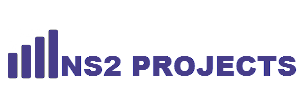- (0)
- 20
Nov -
Author : NS2 Projects Category : NS2 PROJECTS IN HYDERABAD
Tags : 2016 Ns2 Projects, Ns2 Projects, Ns2 Projects with source code
The 3rd Generation Partnership Project (3GPP) recently started standardizing the “Licensed-Assisted Access using LTE” for small cells, referred to as Dual Band Femtocell (DBF) in this paper, which uses LTE air interface in both licensed and unlicensed bands based on the Long Term Evolution (LTE) carrier aggregation feature. Alternatively, the Small Cell Forum introduced the Integrated Femto-WiFi (IFW) small cell which simultaneously accesses both the licensed band (via cellular interface) and the unlicensed band (via WiFi interface). In this paper, a practical algorithm for IFW and DBF to automatically balance their traffic in licensed and unlicensed bands, based on the realtime channel, interference and traffic conditions of both bands is described. The algorithm considers the fact that some “smart” devices (sDevices) have both cellular and WiFi radios while some WiFi-only devices (wDevices) may only have WiFi radio.
In addition, the algorithm considers a realistic scenario where a single small cell user may simultaneously use multiple sDevices and wDevices via either the IFW, or the DBF in conjunction with a Wireless Local Area Network (WLAN). The goal is to maximize the total user satisfaction/utility of the small cell user, while keeping the interference from small cell to macrocell below predefined thresholds. The algorithm can be implemented at the Radio Link Control (RLC) or thenetwork layer of the IFW and DBF small cell base stations.Results demonstrate that the proposed traffic-balancing algorithm applied to either IFW or DBF significantly increases sum utility of all macrocell and small cell users, compared with the current practices. Finally, various implementation issues of IFW and DBF are addressed.
